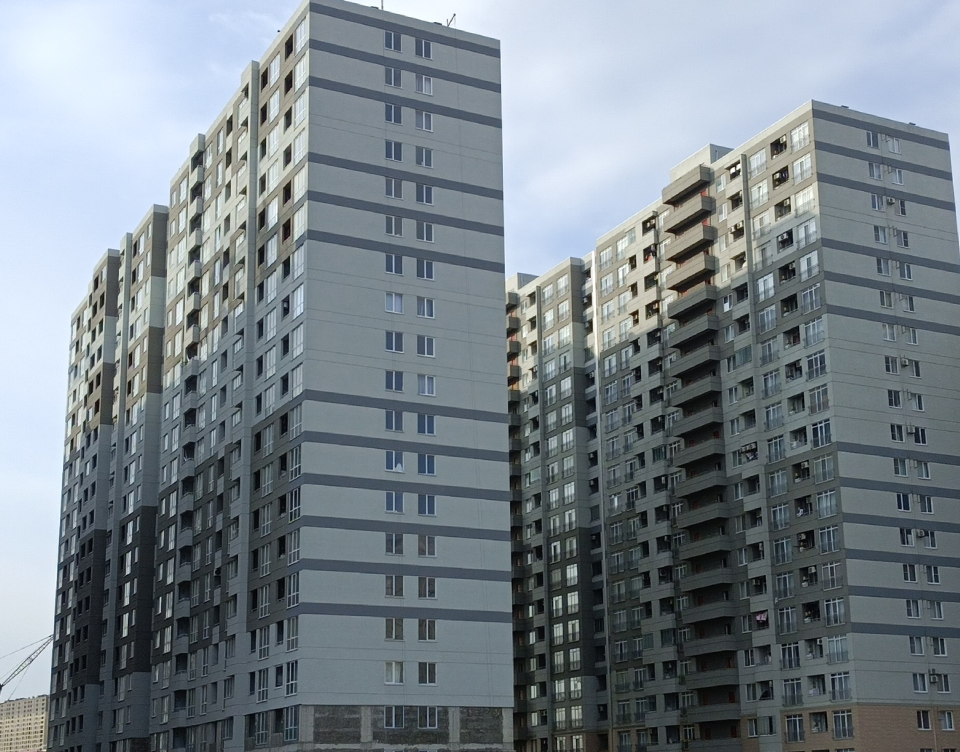- CEMENT-BASED PLASTER WORKS
- FACADE THERMAL INSULATION WORKS
- VENTILATED FACADE SYSTEMS
- FACADE CERAMIC WORKS
CATALOG
Download our 2024 Presentation
FACADE THERMAL INSULATION WORKS
Facades to be insulated can be made of different materials. These materials include EPS, XPS, quartz wool, and stone wool. First of all, beacons are erected to determine the curvature of the building for upcoming work. The beacons show the curves left during the construction of the building. In most cases, distortions in buildings can be eliminated with black plaster, which reduces the consumption of adhesive materials. Alternatively, the elimination of such distortions is regulated by the thickness of the thermal insulation material if it exceeds 2 cm with glue. In general, facades with thermal insulation systems do not need black plaster. After installing the beacons, plaster, stone, concrete, and aerated concrete materials are primed with a high-quality primer layer that has a special ability to penetrate inside. After this, the adhesive for gluing thermal insulation materials is prepared according to the manufacturer’s instructions. The prepared glue is applied to the heat-insulating material and glued to the wall along pre-installed beacons. After the glue has completely dried, the thermal insulation materials glued together with glue are specially fixed with thermal insulating dowels with a metal nail head in plastic. Depending on the shape and technical parameters of the building, 7-12 pieces are added per 1 m2. The areas treated with Dupel are immediately reinforced with a façade mesh with a density of 145-165 g/m2, resistant to an alkaline environment, with fiberglass, and a facing material is applied to it. The edges of windows and other protrusions are reinforced in advance with special parts. After this, in accordance with the architecture, if necessary, installation of various decorations on the facade is carried out. Installed trim can be made from rock wool, expanded polystyrene, or Thermo Aglays pre-fabricated polystyrene foam. After the facing plaster has completely dried, the next layer of the system is a layer of a special quartz granular primer. 24 hours after applying the primer layer, decorative plaster, paint, or artificial concrete work can be applied to it according to the architectural design. As the last layer, apply at least 2 layers of silicone, facade paints based on silicate-silicone. In addition, when performing these tasks, one should not lose sight of various nuances. Among them is special sealing of window edges, for which a special window edge contact profile (the so-called internal corner) should be used. Thanks to the unique feature of this profile, the window prevents water and air from flowing from the edges of doorways. Because metal, plastic, or aluminum window profiles cannot be connected to cement-based coatings, and this leads to the formation of microcracks along the edges of the windows during their service life. Another nuance when starting facing work is to pre-reinforce the corner parts of window and door openings with alkali-resistant fiberglass mesh. This helps prevent the formation of cracks in the corners, which are the weakest point of window and door openings during operation. Being one of the most important conditions when duplicating thermal insulation boards on facades, it serves the durability of this system. Thus, snipes ensure that the stone wool material remains durable on the façade for a long time. The snipes must be specially made of class 1 plastic and have an iron core with a thickness of at least 4.5 mm. Iron inserts must have special caps so that stains do not form on the facades later. The dowel can be applied in different quantities depending on the shape of the facade, its height, and the shape of the final layer of the facade. The most important advantages of insulated facades are the following:
Energy efficiency – saving on utilities
Soundproofing function
Moisture resistance
Protecting the building from external influences and extending its service life
Improving the internal microclimate of the house
 WRITE TO US
WRITE TO US
Send Your Request
Head Office
Mammad Araz Street 25 B


